Introduction
Since Ethereum shifted to Layer 2-centric scaling solutions, coupled with the rise of tools like RaaS, numerous public chains have rapidly developed. Many entities wish to build their own chains to represent different interests and seek higher valuations. However, the emergence of numerous public chains has made it difficult for the ecosystem's development to keep pace, leading many projects to experience a drop in value at their Token Generation Event (TGE).
With the help of OP Stack, Coinbase launched its own Base Layer 2, Kraken released Ink; leveraging ZK technology, OKX introduced XLayer; Sony launched Soneium, and LINE released Kaia, among others. Today, the financial and technical barriers to building a chain have significantly lowered, with the cost of operating a chain based on OP Stack being around $10,000 per month.
The future will undoubtedly be an era of multi-chain coexistence. Although these Layer 2 chains may choose EVM compatibility for interoperability, the Web2 entities behind them have numerous downstream applications, making it challenging to build applications and reach consensus on the same chain.
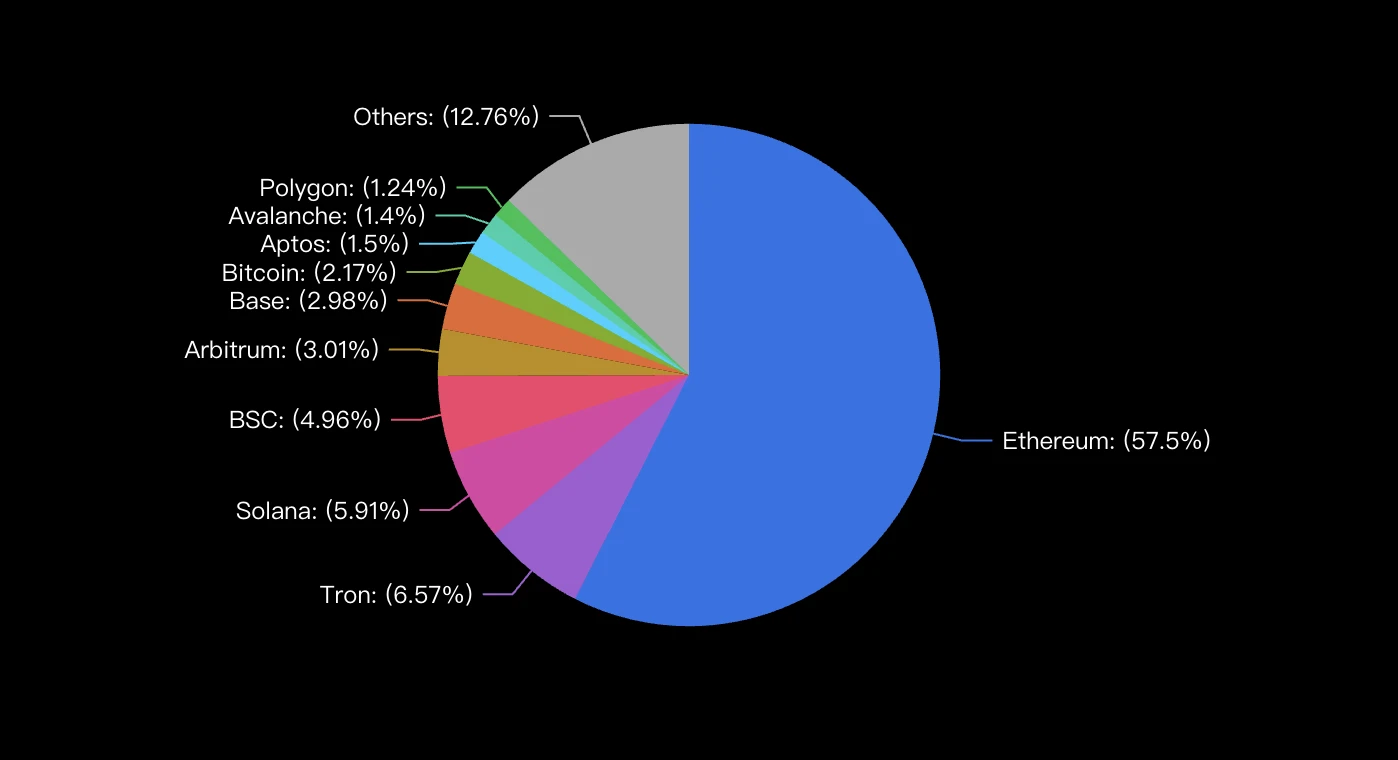
TVL Breakdown, source: Defillama
The current multi-chain ecosystem presents a new challenge: liquidity and state fragmentation. Given the inevitability of multi-chain existence, interoperability is a field that must be explored and resolved. There are currently many liquidity solutions, such as chain abstraction (Particle Network, Socket, XION, INFINIT, Borsa), intent (Anoma, Khalani), Clearing Execution (Connext), Native CrossChain (Cross), ZKSharding (=nil; Foundation), but their core essence is the same.
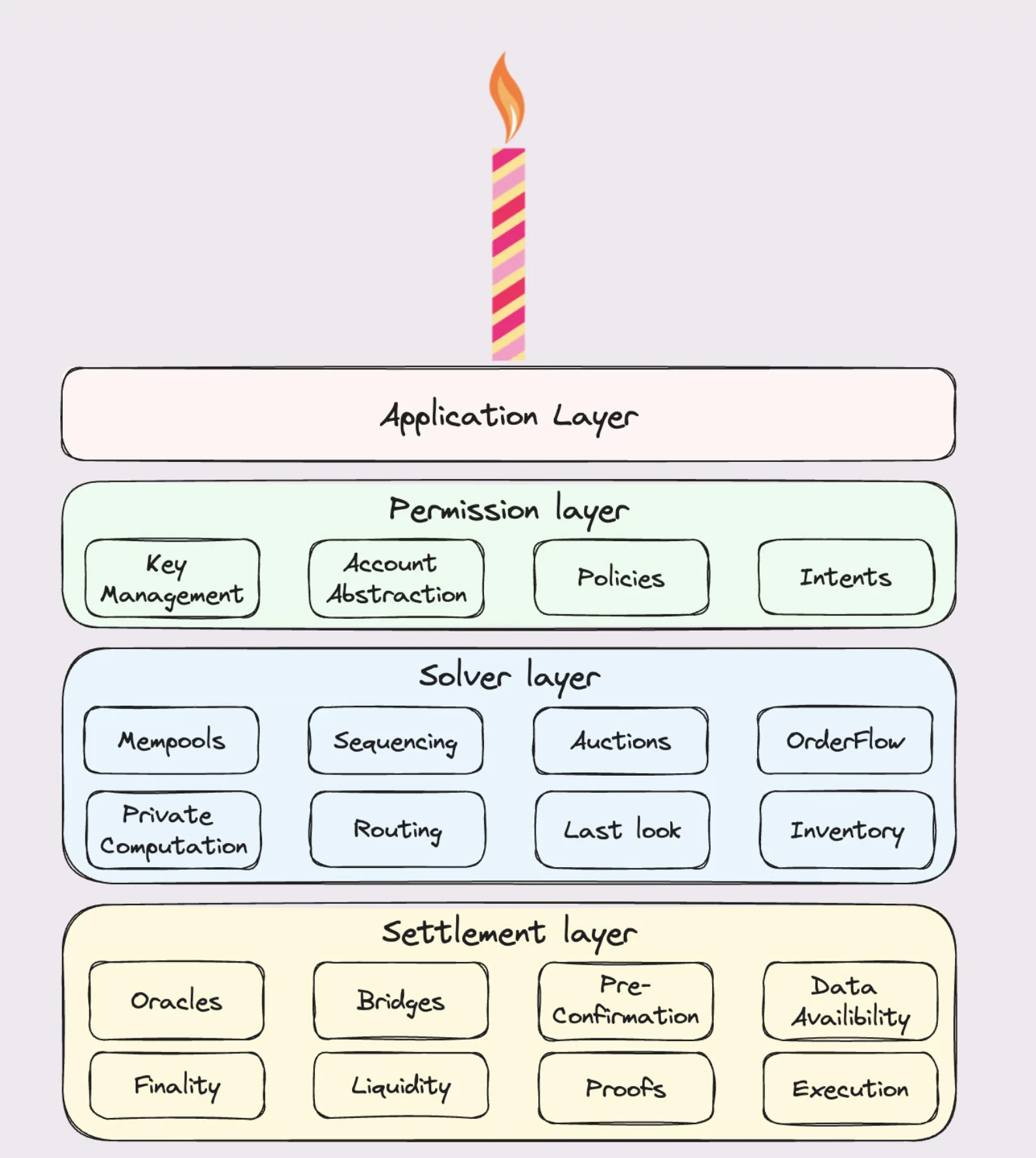
Chain Abstraction Stack, Source: Frontier Research
We use the industry-recognized Cake architecture to introduce the core components of cross-chain abstraction from top to bottom:
Application Layer
This is the layer where users interact directly, and it is the most abstract layer in liquidity solutions, as it completely shields the details of liquidity conversion. In the application layer, users interact with the front-end interface without necessarily understanding the underlying liquidity conversion mechanisms.
Permission Layer
Located below the application layer, users connect their wallets to dApps and request quotes to fulfill their trading intentions. Here, "intent" refers to the user's expected final trading outcome (i.e., output), rather than the specific execution path of the trade.
Key Management and Account Abstraction
Due to the existence of a multi-chain environment, a key management and abstraction system that adapts to different chains is needed to maintain the unique account structures of each chain. For example, SUI's object-centric account system is completely different from EVM. One Balance is a representative project in this field, building a trusted account system that does not require inter-chain consensus, only trusted commitments between existing account systems. Near Account achieves abstract management by generating multi-chain account wallets for users, greatly optimizing user experience and reducing UX fragmentation. However, liquidity aspects mainly integrate existing public chains.
Solver Layer
This layer is responsible for receiving and implementing user trading intentions, with Solvers competing to provide a better user experience, including faster transaction times and execution speeds. Based on this, intent-based projects like Anoma have built various intent-driven solutions. Derivatives of such intents, like the Predicate component, can realize user intentions under specific rules.
Settlement Layer
This is the middleware layer used by the Solver layer to realize user intentions. The core components of liquidity and state fragmentation solutions include:
Oracle: Used to obtain state information from other chains.
Bridges: Responsible for the transfer of information and liquidity across chains.
Pre-Confirmation: Shortens cross-chain confirmation times.
Data Availability (DA): Provides accessibility to data.
Additionally, factors such as inter-chain liquidity, finality, and Layer 2 proof mechanisms must be considered to ensure the efficient operation of the entire multi-chain system.
Solutions
Currently, there are various solutions on the market to address liquidity fragmentation. After reviewing numerous solutions, we found that there are mainly a few approaches:
- RaaS-Centric: Similar to Rollup solutions like OP Stack, this approach assists in building Rollups on OP Stack by adding specific shared sequencers and cross-chain bridges to share liquidity and state. This aims to address liquidity and state fragmentation at a higher level. A more specialized approach is the design of standalone shared sequencers, which is more targeted at Layer 2 and lacks universality, such as Astria, Espresso, and Flashbots.

Chain Abstraction, source: NEAR
Account-Centric: Similar to NEAR, this approach builds a full-chain account wallet that supports signing and executing transactions across various blockchain protocols through a technology called "chain signatures." The core component is the MPC network, which replaces users in signing multi-chain transactions. Although this solution can greatly address UX fragmentation, it involves complex backend implementations for developers and does not fundamentally solve liquidity and state fragmentation.
Off-Chain Intent Network-Centric: This refers to the Solver Network in our "Introduction" cake architecture diagram, where users send intents to the Solver network, and Solvers compete to provide optimal completion times and transaction prices. These Solvers can be AI Agents, CEXs, Market Makers, or even integrated protocols like Liquorice. Projects in this area include Anoma, Khalani, Enso, aori, and Valantis. Although intents can theoretically achieve arbitrarily complex cross-chain operations, sufficient liquidity Solvers are needed for implementation, and when encountering off-chain demands, there is a risk of fraud by Solvers. If fraud proofs and other measures are introduced, the implementation difficulty of the Solver Network will increase, raising the threshold for running Solvers.
On-Chain Liquidity Network-Centric: This direction specifically optimizes cross-chain liquidity issues but does not address other on-chain state fragmentation problems. Its core is to build a liquidity layer on which applications can be built to share full-chain liquidity. Some projects include: Raye Network, INFINIT, Everclear, Elixir, etc.
On-Chain Application-Centric: These applications build high liquidity applications by integrating large market makers or third-party applications, such as Liquorice, Socket, Radiant Capital, 1inch, Hedgemony, etc. These projects require managing complex cross-chain processes, placing high demands on developers, and are therefore prone to hacking incidents.
Addressing liquidity issues is a very important proposition; in the financial world, liquidity often represents everything. If a platform can be built to integrate liquidity, especially consolidating fragmented full-chain liquidity, it will have tremendous potential, and we have seen many different solutions.
In the above two classifications, we can see that according to the cake structure, the Settlement Layer is the most atomic-level solution. On top of these atomic solutions like cross-chain, oracles, and Pre-Confirmation solutions, a more abstract layer is built, which includes the Solver Layer, Permission Layer, and Application Layer. The various solutions listed above that build abstraction or liquidity solutions in different directions align with this hierarchical structure and can be understood as upstream and downstream relationships. However, these solutions are still not atomic-level solutions, and the entire liquidity fragmentation issue has led to the emergence of many complex derivative problems, resulting in a plethora of solutions for interoperability. However, they fundamentally rely on these components. Next, we will discuss several typical projects related to chain abstraction concepts to see how each addresses liquidity fragmentation from its own perspective.
INFINIT
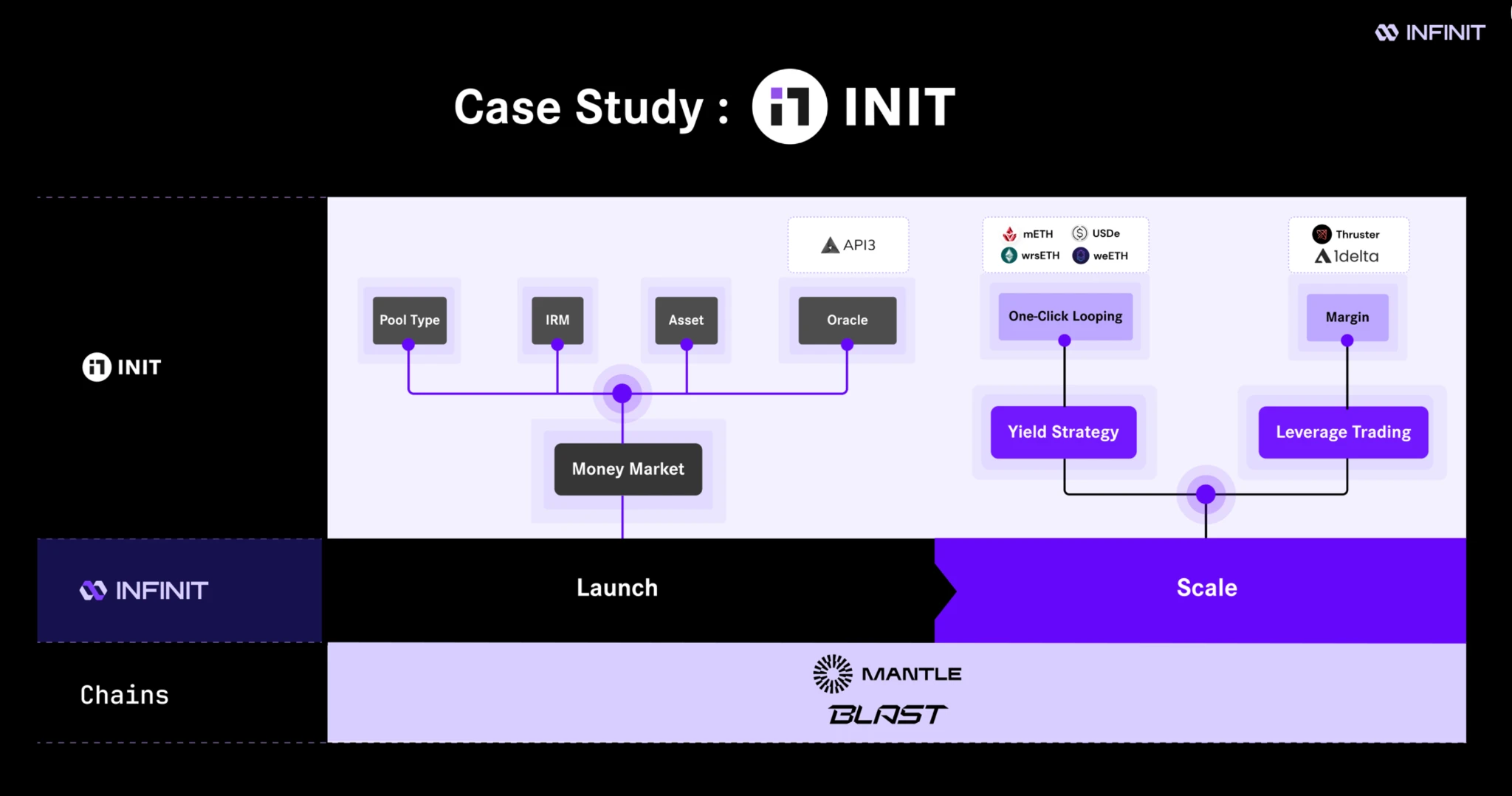
INFINIT Structure, source: Infinit
INFINIT has built a RaaS service for the DeFi sector, providing the necessary components for DeFi protocols, such as Oracles, Pool Types, IRM, Assets, etc., and also offering immediately usable components like Leverage Trading and Yield Strategy. It serves as an application construction endpoint, but the final liquidity is placed in Infinit's liquidity layer. However, it has not yet disclosed the underlying working principles. Currently, INFINIT has secured $6 million in seed funding from Robot Ventures, Electric Capital, and Maelstrom Capital.
Khalani Network
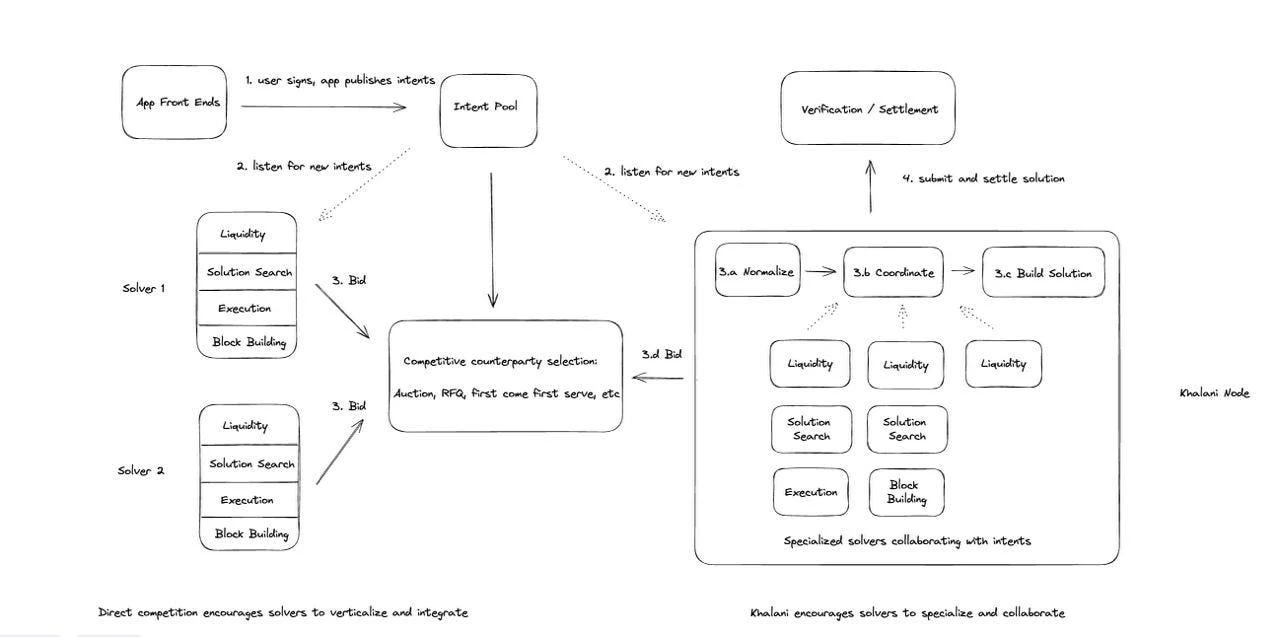
Khalani Network Structure, source: Khalani Network
Khalani has built three core components: the Intent Compatibility Layer, Validity, and the General Settlement Layer.
External applications or the intent layer can publish intents to Khalani, and then Khalani's Intent Compatibility Layer can convert external intents into a format recognizable by the protocol Solvers, using a standardized format known as Validity language. Khalani nodes are responsible for submitting the final results to the General Settlement Layer through cross-chain bridges and fast settlement technologies. This project is still in the construction phase and has not disclosed more work details. In August, it secured $2.2 million in seed funding from Ethereal Ventures, Nascent, Maelstrom Capital, and others.
Liquorice
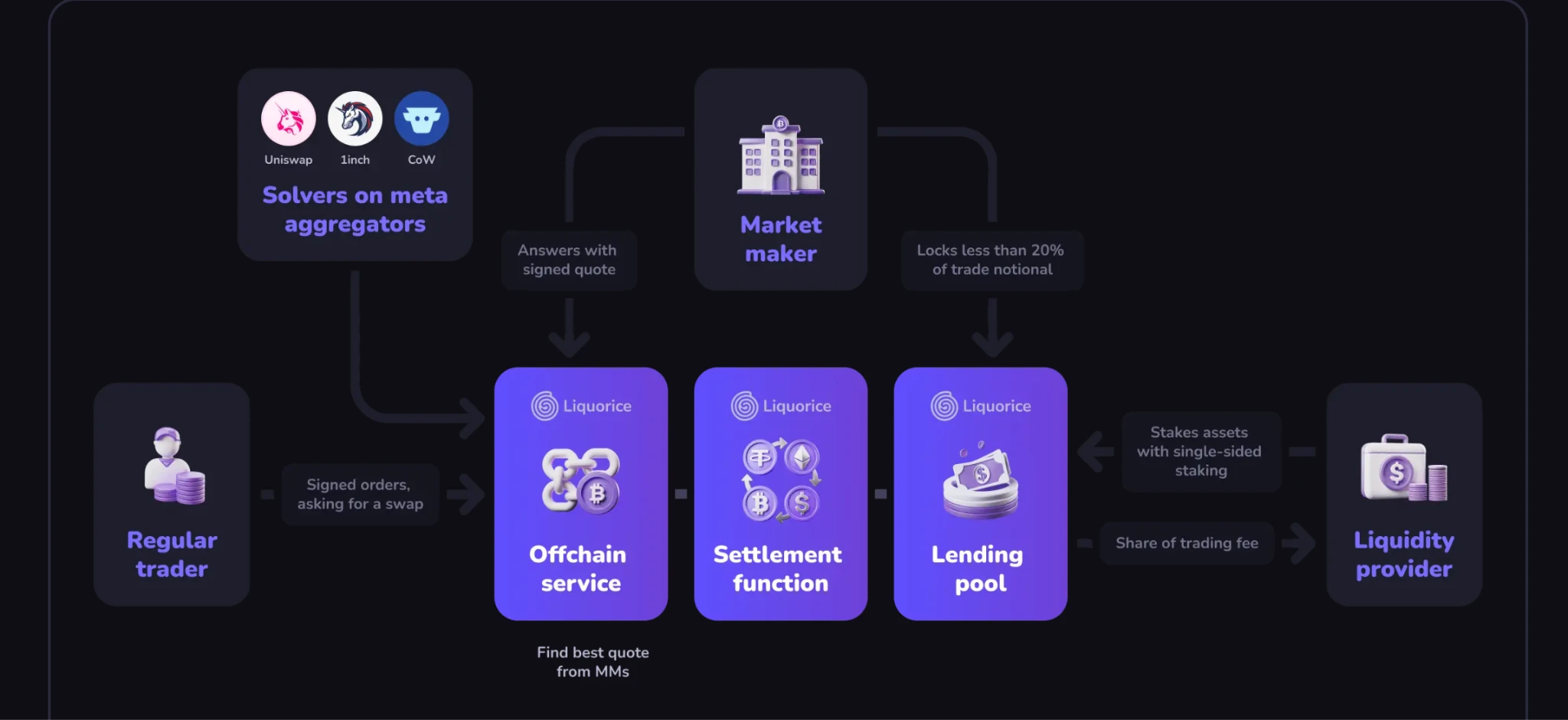
Liquorice Structure, source: Liquorice
Liquorice is a decentralized application that enables auction-based price discovery and unilateral liquidity pools. The main mission of Liquorice is to provide efficient inventory management tools for professional trading firms and to easily connect to core DeFi protocols like 1inch and Uniswap X when settling trades using intents. At the same time, Liquorice has created a lending market for its lending transactions. This application focuses more on the trading itself. It is still in the development phase and announced in July that it had secured $1.2 million in Pre-seed funding led by GreenField.
Xion
Xion is an upgrade from the Burnt brand, which previously focused on consumer applications. The team later discovered significant fragmentation issues in on-chain interactions, leading to the creation of Xion to improve this problem. Xion is built on the Comet BFT consensus protocol. Its cross-chain communication is based on Cosmos IBC, making it more native and secure than other cross-chain bridges. It has gone through four rounds of financing, with investors including Animoca, Multicoin, Alliance DAO, and Mechanism.
=nil; Foundation
=nil is a ZK computing power market, ZK co-processor, and Layer 2 developer for Ethereum, with a team possessing deep expertise in ZK technology. They proposed the zkSharding solution, which uses ZK technology to horizontally scale the Ethereum mainnet, executing sharding for parallel transaction processing and generating ZKPs, while the main shard verifies data, communicates with Ethereum, and synchronizes network states among all validators. The main shard also manages the distribution of validators and accounts in the execution shards. The consensus protocol used by the validation committee is also Hotstuff, which is common in the latest parallel execution projects. =nil; L2 has embedded cross-shard communication into the protocol from the start. Cross-shard messages are validated as transactions by the validator committee of each shard.
The basic idea is to build an embedded cross-shard communication architecture similar to IBC through a sharded Layer 2 structure, which can address liquidity and state fragmentation issues. However, the core idea is not reasonable because the problem of liquidity fragmentation is a multi-chain issue, while it constructs a single Layer 2, meaning that to solve it, all chains would need to become a shard of ZK-sharding, which is difficult to achieve.
ERC-7683
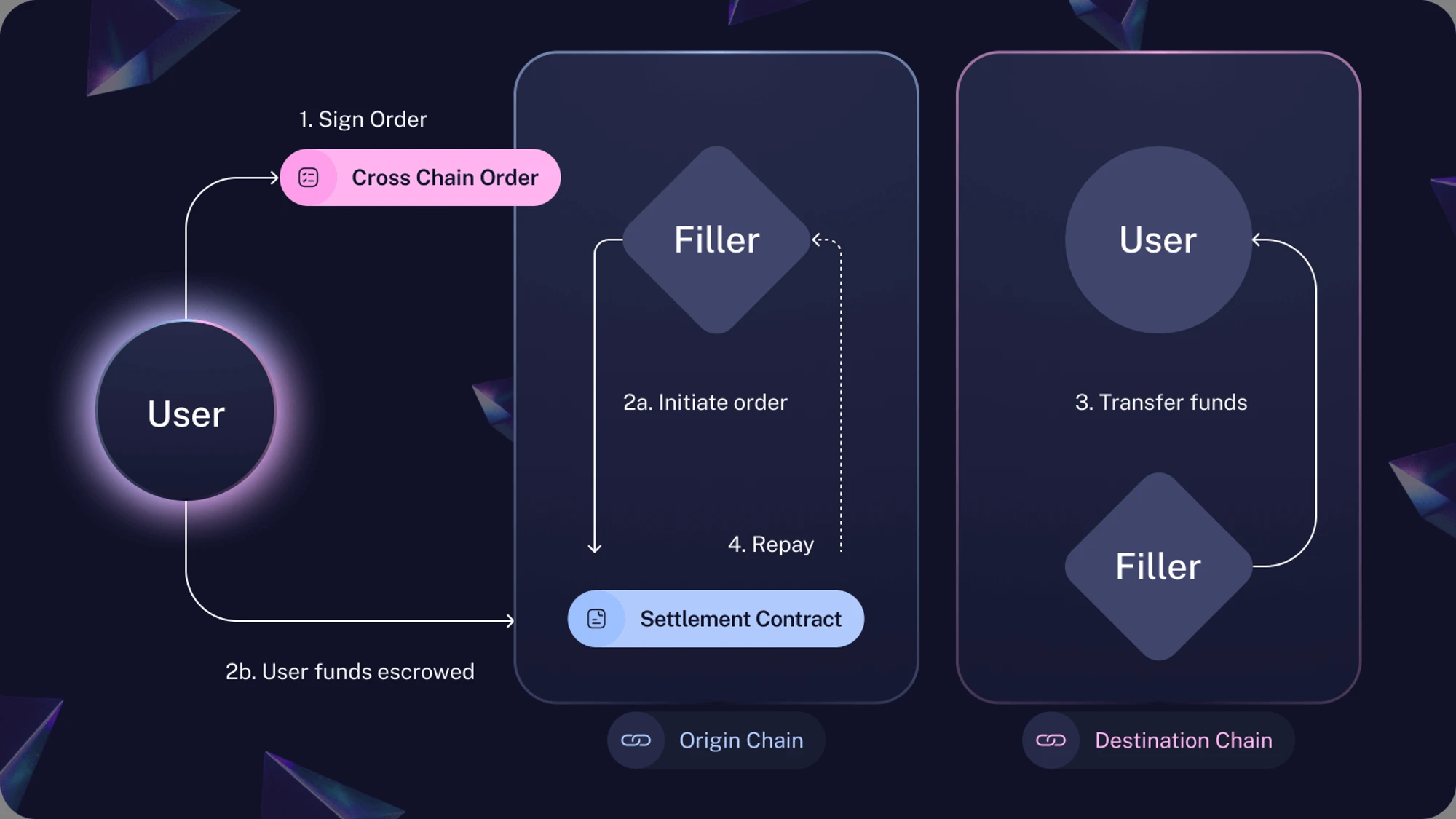
ERC-7683, source: Across
Ethereum is also working to address the issue of cross-chain liquidity. Currently, Arbitrum, OP, and Uniswap are the first to publicly support the ERC7683 standard, which also uses an intent-based cross-chain approach. Its core goal is to establish a universal standard for cross-chain operations across L2 and sidechains, standardizing order and settlement interfaces to achieve seamless cross-chain execution. The main core is a Filler, which can also be seen as the Solver role in chain abstraction that pays on behalf of users. This proposal was co-developed by Uniswap and Across and is currently under review by the Cake working group.
OP Stack
OP Stack, like ERC-7683 and zkSharding, is an internal Ethereum solution addressing liquidity fragmentation between Layer 2s, tackling it from architectural, consensus, and application levels. OP Stack aims to solve the issues of information transmission and Sequencer decentralization in one go by designing a complete multi-Layer 2 solution. When you use the OP Stack architecture, cross-chain contracts are automatically deployed, and there is a Supervisor to challenge and prevent the transmission of false cross-chain information. Currently, Coinbase, Uniswap, Kraken, and others are using the OP Stack architecture.
A typical example is Unichain. Unichain primarily addresses cross-chain liquidity fragmentation by integrating with the Superchain network. This setup facilitates seamless liquidity movement by providing the following features:
Intent-based cross-chain bridge: This bridge supports fast and reliable liquidity transfer between blockchains, allowing users to set intents, thereby helping the system automatically select the best path for liquidity movement. This approach abstracts complexity for users, making cross-chain transactions smoother and faster.
Unichain Verification Network (UVN): This decentralized node operator network verifies cross-chain transactions, providing faster economic finality. Faster finality is crucial for ensuring efficient settlement of cross-chain transactions, thereby minimizing the risk of liquidity fragmentation due to delayed settlements.
Flashblocks and verifiable block construction: By using Flashblocks, Unichain significantly shortens block times, enhances liquidity provider efficiency, and achieves more synchronized cross-chain markets. Flashblocks help ensure that liquidity is always accessible and reduce the negative impacts caused by block confirmation delays, which can lead to liquidity fragmentation.
Conclusion
Addressing the issue of cross-chain liquidity is a complex field with numerous solutions. For instance, Layer 2 solutions include embedded cross-chain messaging from Ethereum, particularly the ERC-7683 standard, as well as OP Stack built by OP to share Sequencers. Outside the Layer 2 context, all Layer 1s also face issues of liquidity, state, and user experience fragmentation. There are application-centered solutions specifically targeting liquidity, as well as off-chain solutions based on Solver Networks, and even account-centered solutions like NEAR, which also rely on off-chain roles like Solvers.
We recognize that cross-chain liquidity, state, and user experience fragmentation are issues facing the entire blockchain industry. If we think about it holistically, a more abstract approach, similar to chain abstraction, is needed. This represents a true entry point into Web3, addressing user experience fragmentation while integrating liquidity and state in ways that users cannot perceive. How to integrate specifically is further divided into using off-chain Solver networks and atomic cross-chain bridges and other facilities, all of which are worth exploring. Overall, the future will undoubtedly be multi-chain, and solving the problem of liquidity fragmentation is an issue that the industry must inevitably face. The integration of full-chain liquidity has vast growth potential and could lead to the construction of a Google for the Web3 era.
Disclaimer:
This content does not constitute any offer, solicitation, or advice. You should always seek independent professional advice before making any investment decisions. Please note that Gate.io and/or Gate Ventures may restrict or prohibit all or part of the services from restricted areas. Please read their applicable user agreement for more information.
About Gate Ventures
Gate Ventures is the venture capital arm of Gate.io, focusing on investments in decentralized infrastructure, ecosystems, and applications that will reshape the world in the Web 3.0 era. Gate Ventures collaborates with global industry leaders to empower teams and startups with innovative thinking and capabilities to redefine the interaction patterns of society and finance.
Official website: https://ventures.gate.io/
Twitter: https://x.com/gate_ventures
Medium: https://medium.com/gate_ventures
免责声明:本文章仅代表作者个人观点,不代表本平台的立场和观点。本文章仅供信息分享,不构成对任何人的任何投资建议。用户与作者之间的任何争议,与本平台无关。如网页中刊载的文章或图片涉及侵权,请提供相关的权利证明和身份证明发送邮件到support@aicoin.com,本平台相关工作人员将会进行核查。



